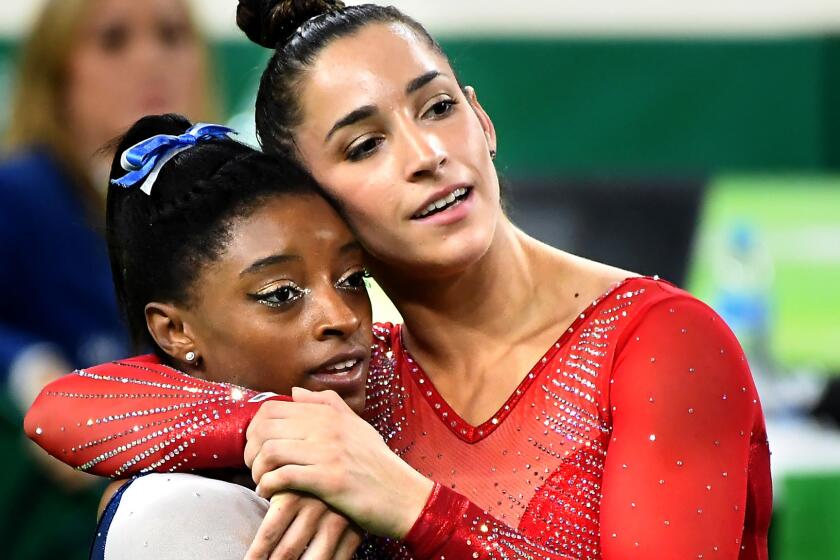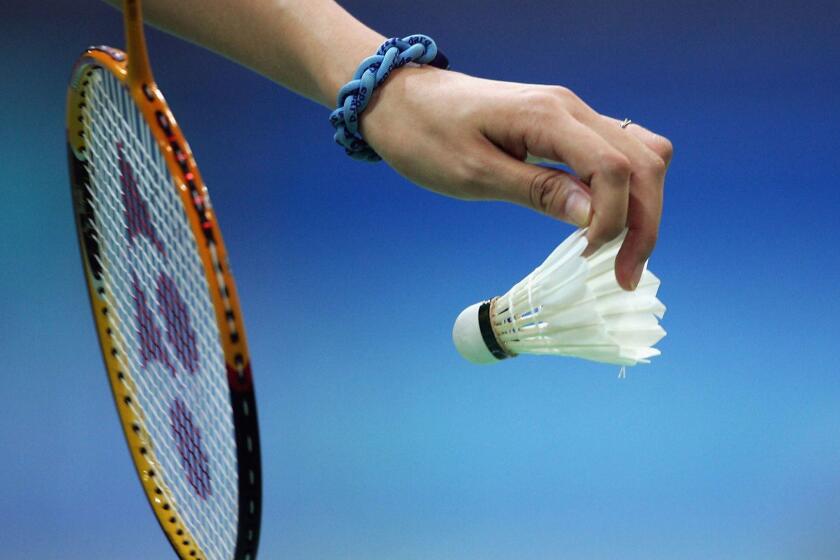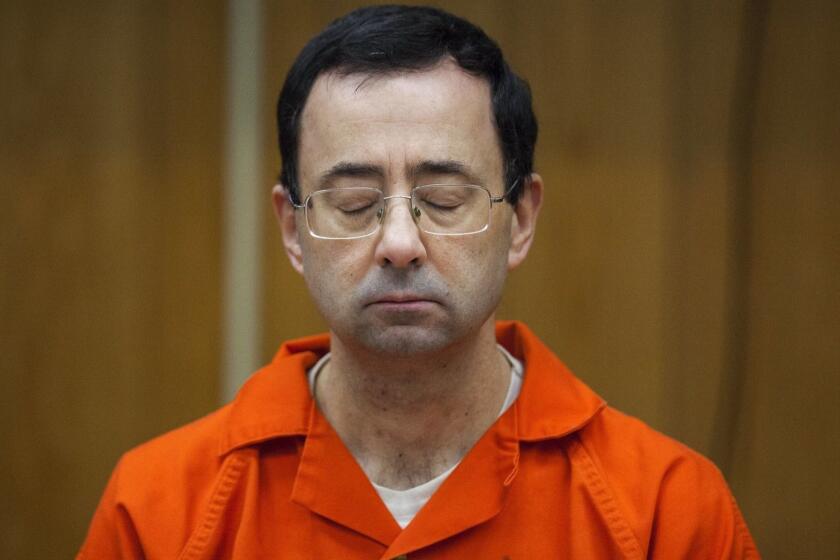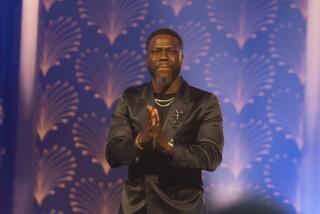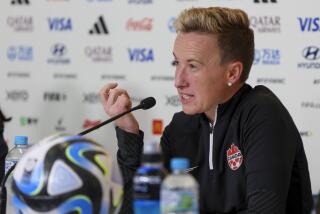How USA Badminton found itself at the center of athlete abuse allegations
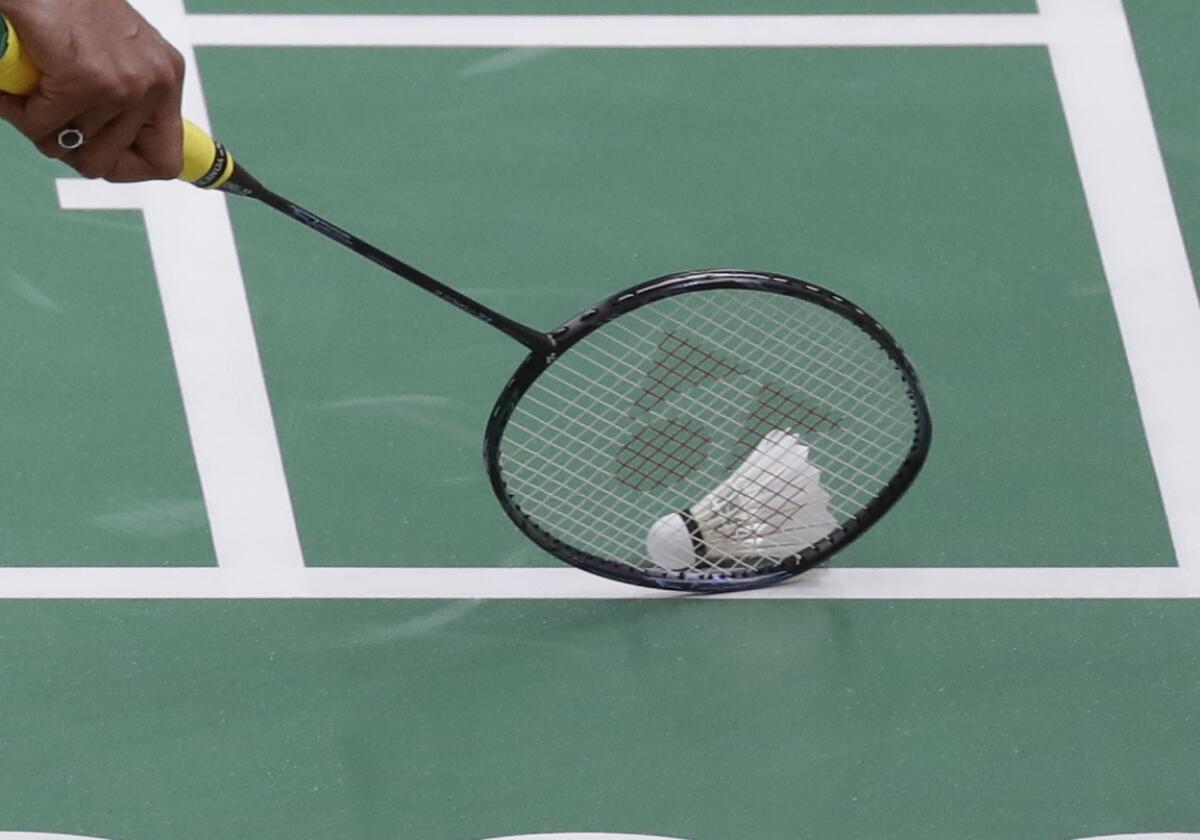
- Share via
The trouble began with a conversation about nine years ago, when a teenage badminton player, talented enough to compete internationally, told a friend and fellow competitor that a prominent coach they both knew had forced her to have sex.
Nothing happened at the time because the player did not want to file a police report. But the story lingered, mentioned in passing every so often, as the coach continued to work with American athletes.
When the allegation resurfaced last summer, discussed among USA Badminton officials before the Tokyo Olympics, the moment seemed right for action.
There was now a greater emphasis on protecting young athletes, and a new mechanism triggered by the Larry Nassar scandal, which saw the disgraced sports doctor molest hundreds of young athletes — including Olympic stars such as Simone Biles and Aly Raisman — before being caught and sent to prison.
The U.S. Olympic movement was pouring millions of dollars into the Center for SafeSport, a watchdog created in 2017 to investigate abuse. Congress had jumped into the fray, enacting laws to further safeguard athletes and requiring sports organizations to become more transparent in reporting allegations.
Simone Biles and Aly Raisman are lashing back at a proposed $215-million settlement that would go to victims in the Larry Nassar sexual abuse scandal.
But this ambitious effort has struggled to gain traction. SafeSport has faced criticism for being ineffective and there is still some confusion about how the new rules should apply. The case of the badminton player is an example, dissolving into a Rashomon-like tale muddied by conflicting viewpoints and bickering.
At USA Badminton headquarters in Southern California, staff was busy preparing for Tokyo as they debated whether to report the nearly decade-old allegation. The governing body’s chief of staff eventually decided to contact SafeSport and, later, local police in the city of Orange. He has since been terminated.
“I knew it was going to be the end of my job,” Alistair Casey said. “But there was no way I could keep quiet about this.”
::
SafeSport recently launched a multipronged case, looking into the sex abuse allegation and an older allegation of rape from the 1980s. Authorities want to know if USA Badminton delayed reporting or sought to hamper any investigations.
Congress has been informed of the incidents as required by federal law. In a letter dated Oct. 1, Sen. Chuck Grassley (R-Iowa) urged USA Badminton to cooperate and mentioned his concerns about “the likelihood of retaliation against a whistleblower. If true, these allegations themselves may be criminal violations.”
This isn’t the first dustup for the national governing body entrusted with overseeing this niche sport and selecting an Olympic squad every four years. The U.S. Olympic & Paralympic Committee previously threatened to decertify USA Badminton for numerous deficiencies, including the manner in which it handled athlete safety, governance and finances.
Badminton saved itself by overhauling its leadership, but sore feelings persist.
“They’re mad at us,” Jon Little, the governing body’s attorney, said of the USOPC and SafeSport. “They have an ax to grind.”
Little, who has represented abuse victims in the sports world, characterized Casey as a “bitter former employee” and said no one at USA Badminton intended to keep the allegation secret. However, he is open about his disdain for SafeSport.
“At the end of the day, we have an organization that is equipped to deal with incidents of sexual abuse,” Little said from his law office in Indianapolis. “It’s the police. Call the police.”
For all the quarrels over what has transpired, all the questions about what happened between the coach and the young prospect years ago, everyone seems to agree on how it all started.
In 2012, the 17-year-old female was chatting via a social media app with Bo Zhao, a fellow player at the elite level. Zhao recalls her saying that a coach had repeatedly forced her to have sex.
The Times does not identify sex abuse victims. The coach in question is not being identified because no formal charges have been brought against him. Attempts to reach him for comment were unsuccessful.
The 20-year-old Zhao was unsure what to do with the allegation, especially because his friend had stopped playing in the U.S., moved back to her home overseas and did not want to tell anyone else. Zhao sought advice from Ben Lee, the head of his badminton club in the San Francisco Bay Area. Not only had Lee competed for and coached the U.S. at the Olympics, he was also a longtime officer with the Palo Alto Police Department.
“I didn’t go into a lot of detail with Ben because the victim didn’t want me to say anything,” Zhao said. “He told me if she wants to go forward with it, she needs to go to the police department. There was no SafeSport then.”
Lee figured “it was one of those things where there was nothing that could be done.”
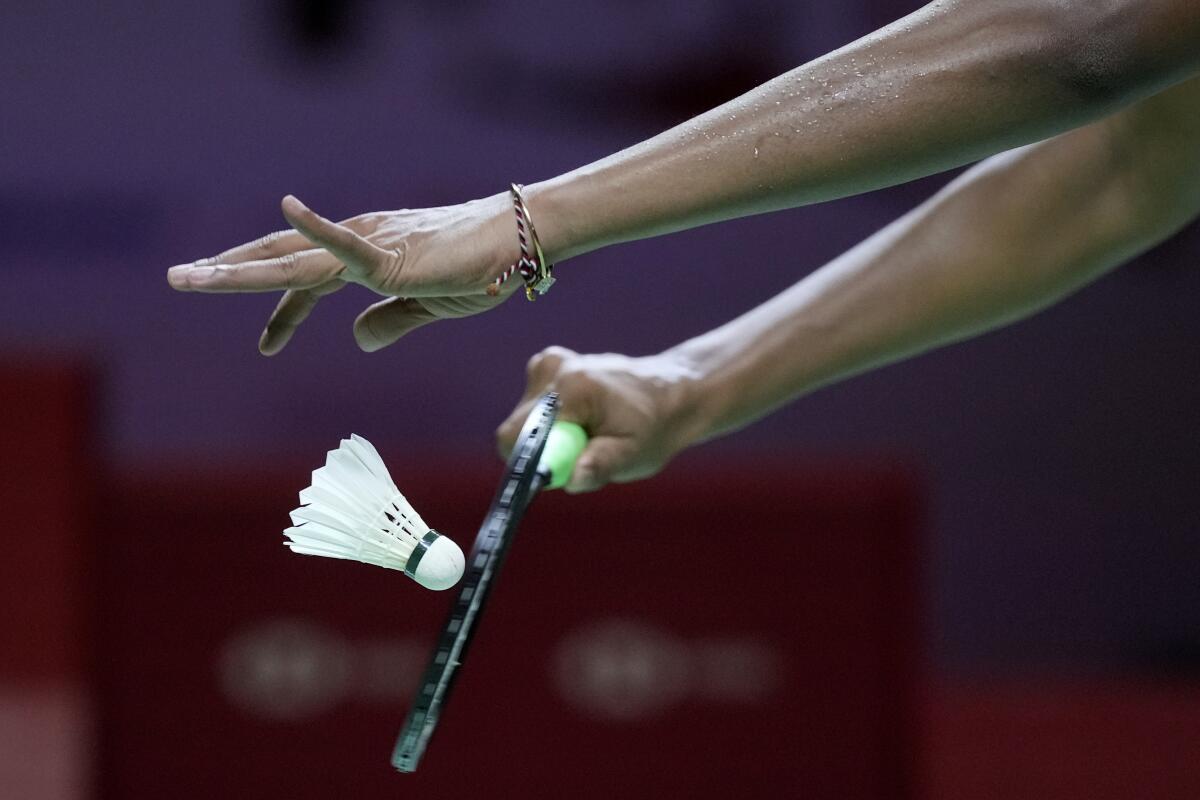
The issue was largely forgotten until six years later, when a coach at Lee’s club was arrested on suspicion of molesting a minor. SafeSport was in place by then, as were federal laws that required governing bodies such as USA Badminton to report any “facts leading them to suspect reasonably that an amateur athlete has suffered an incident of child abuse.”
Lee and Zhao spoke briefly three years ago about the 2012 incident. Lee, a board member with USA Badminton by then, took no action in 2018.
“These things were so long ago,” he said. “You think it’s resolved.”
::
During a USA Badminton staff call last July the alleged abuser’s name came up in regards to an unrelated matter. The next day, Lee — no longer on the board — called to tell Casey, the USA Badminton chief of staff, about the allegation.
As chief of staff and liaison to SafeSport, Casey recalled blurting: “When did you know? Has it been reported?”
A series of intense discussions ensued, but badminton officials were too busy preparing for Tokyo to reach a decision. When they returned, chief executive Linda French — who referred all questions for this story to attorney Little — called on a relatively new board member, Nancy Hogshead-Makar, for advice.
Hogshead-Makar is a four-time Olympic medalist in swimming who has devoted herself to women’s rights in sport. As an attorney, she founded the Champion Women organization to advocate for Title IX compliance. As a survivor of sexual abuse, she teamed with other swimmers to get a well-known coach, Mitch Ivey, banned for life.
The conversation with French left her with mixed emotions.
“I just think people, in good faith, didn’t understand the rules,” she said. “They honestly thought that because it was so long ago, the victim didn’t want to come forward … that they were not responsible for reporting to SafeSport or the police.”
But as a woman who had pushed for the new protection laws, Hogshead-Makar worried because the accused coach was still prominent in American badminton, still working with minors. She told French to report immediately.
“That is why I’m on the board,” she said. “I knew what the law was.”
This was where the situation grew even more complicated. Casey says that, although his bosses never explicitly forbade him from taking action, he felt pressure to keep quiet. He says they raised the issue of the other alleged rape, the one from the 1980s, that Casey had heard about at the time but had never reported.
Casey went ahead and contacted SafeSport, telling them about both incidents. He later filed a report with police in Orange.
“I just think people, in good faith, didn’t understand the rules. They honestly thought that because it was so long ago, the victim didn’t want to come forward … that they were not responsible for reporting to SafeSport or the police.”
— Nancy Hogshead-Makar, an attorney and USA Badminton board member
In regards to the more-recent allegation, Little recalled that he supported going to police but wanted to wait on SafeSport. He has often accused the watchdog of bungling investigations and getting in the way of better-trained law enforcement.
“I tell everybody to report to the police first,” Little said. “Once the police tell you it’s OK, then go to SafeSport.”
His frustration stems from the fact that the center has long been viewed as underfunded and understaffed, leading to a backlog of cases. There are questions about independence, given that it receives $20 million annually — the great majority of its budget — from the USOPC.
Still, Hogshead-Maker said, “I don’t care what awful experiences you’ve had in the past, the law says you have to report to both [SafeSport and police].”
::
To some degree, the post-Nassar process worked in this case. When the story of the badminton allegation arose last summer, authorities were notified relatively quickly.
Zhao, an elite player who first heard the allegation, recently contacted the alleged victim. She still declines to speak with authorities. Police in Orange say that with no victim to interview, they have closed their investigation. USA Badminton insists it has cooperated with SafeSport, submitting more then 1,000 requested documents.
“At the end of the day,” USA Badminton attorney Little said “the problem is not delayed reporting.”
But Casey believes the situation should have been addressed years ago, with the advent of SafeSport, and the matter is far from settled.
An independent investigation has provided new insight into the U.S.
The incident soured relations between Casey and his colleagues. It didn’t help that he had a private email account with Little’s law firm, the contents of which he handed over to investigators. Both sides agree none of the emails were related to the alleged abuse, but might have included sensitive internal discussions from the earlier decertification tussle. Little has threatened to take legal action.
As his work atmosphere grew more tense, Casey took a mental health leave . On Nov. 17, shortly after returning, he was informed by email that his position had been eliminated “due to required cuts in USAB’s operating budget for the upcoming years.”
His attorneys say he was retaliated against and wrongfully terminated, a claim that USA Badminton denies.
Hogshead-Makar worries about the timing of Casey’s dismissal and lingering friction with Congress. “In an attempt to cover themselves,” she said, “[USA Badminton] has made it worse.” She has now circulated an email among board members suggesting that French step down as chief executive.
Last week, legislators sent a letter to the USOPC and the national governing bodies for every sport reminding them of their obligation to protect young athletes. The letter cites laws created in the wake of the Nassar scandal and mentions badminton specifically, reiterating concerns that officials failed to report a sexual allegation.
As for the SafeSport cases, they have been “administratively closed,” a designation that allows for continued investigation and reopening at any time. French has been placed on temporary restriction. Safesport would not provide any details about the suspension.
“The center does not comment on matters to protect the integrity of the investigative process,” a SafeSport spokesman said. “When it comes to failure to report or abuse of process ... the center takes those allegations very seriously.”
More to Read
Go beyond the scoreboard
Get the latest on L.A.'s teams in the daily Sports Report newsletter.
You may occasionally receive promotional content from the Los Angeles Times.

